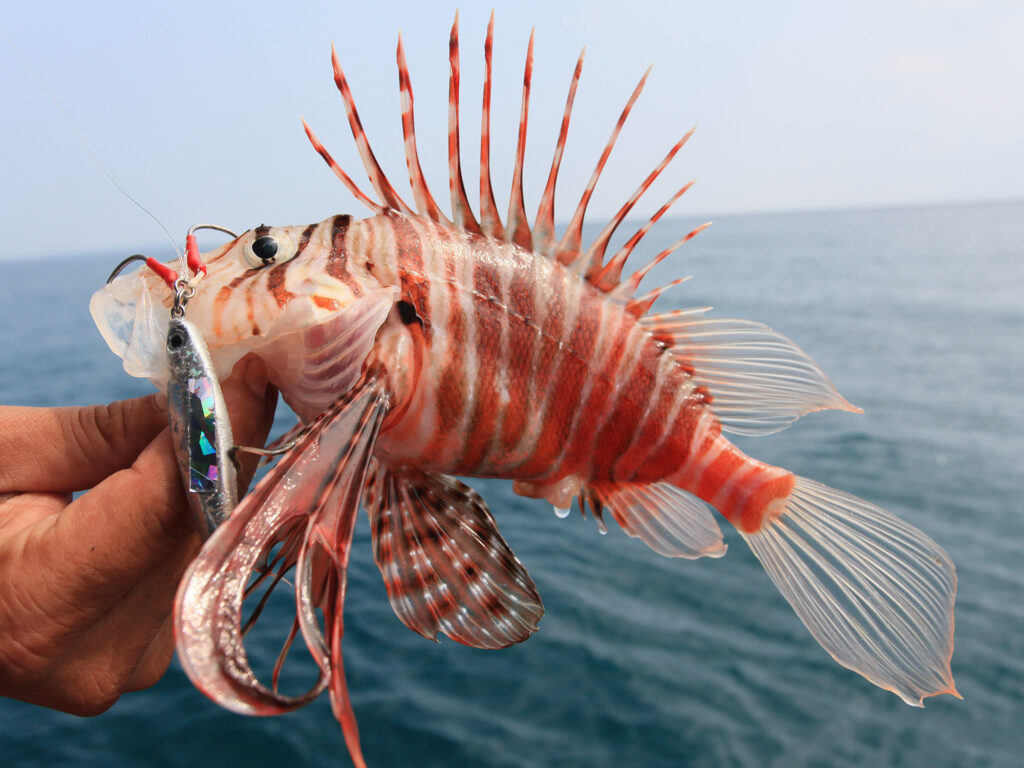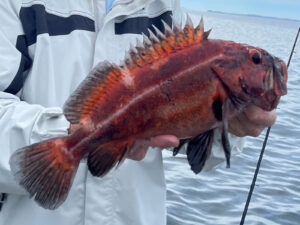
Do you have a photograph of a fish you can’t identify? If so, we’re up for the challenge, and would welcome the opportunity to share your photo and its ID with an international audience of enthusiasts. (Whether published or not, we will personally respond to every inquiry.) Email your jpgs, as large/hi-res as possible, to: fishfacts@sportfishingmag.com.
Clearly, says Jean-Francois Helias, of anglingthailand.com, this is a lionfish. But which species? Helias writes that in fact one of his guides, Pro Kik Phanpraphat, and clients were catching “one after the other” while jigging near Koh Kut Island, in the Gulf of Siam. He would like to know more about this impressively spiny fish.
Handle with care, advises Sport Fishing Fish Facts expert Ben Diggles, based in Australia. That is a very venomous plaintail lionfish (Pterois russelii). There are many species of lionfish in tropical and warm-temperate waters around the world. The plaintail grows to around 12 inches, inhabiting muddy areas in shallow estuaries, bays and coastal waters throughout the western Indo-Pacific. Like most lionfishes, they’re voracious predators of small fishes, so snapping up small jigs is hardly surprising.
The plaintail, like most lionfish species, sports venom glands at the base of each spine. These, Diggles says, operate like a hypodermic syringe; when contact is made with the business end of the spine, venom containing a potent and highly painful neurotoxin is released into the puncture wound. “Fortunately the venom is not deadly, but it can cause paralysis in rare cases, so best to neutralize by dousing the affected area with or in hot water,” Diggles says.
The plaintail can be sometimes confused with the common lionfish, Pterois volitans, an invasive species now well established in the Western Atlantic, from the Carolinas south through the Caribbean. But it lacks the many rows of small dark spots on tail, soft dorsal and anal fins found on the common lionfish.








